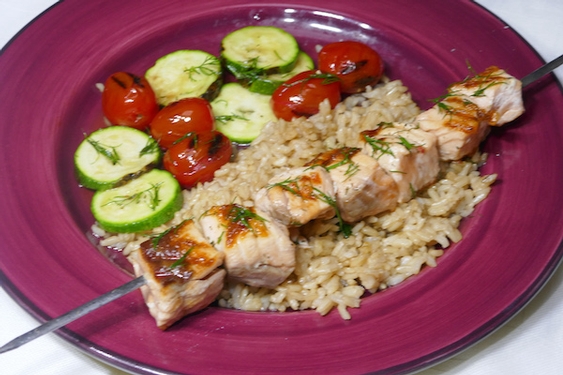Medhu vadai is a savory Indian doughnut perfect for anytime of the day.
Although it is typically served for breakfast with steamed rice dumplings (idlies) or as an evening snack with coffee or tea, it also appears at elaborate three-course lunches served on a banana leaf and as leftovers for dinner, soaked in yogurt blended with green chilies and coconut or in a lentil stew called sambar. While it is a favorite roadside snack served on a paper plate, it also can take a froufrou accent, showing up on fine china in mini sizes at cocktail parties.
The vadais, which are delicately crisp on the outside and pillowy soft inside, are made from skinned black lentils that are first soaked in water and then blended into a smooth, thick batter.
Next, whole black peppers, green chilies, salt and curry leaves are mixed into the batter. The batter then is scooped into a ball and patted flat on top of a thick plastic sheet with wet fingers. Finally, a hole is indented in the middle before it is deep-fried in oil. When served, dipping the vadai in coconut chutney or dunking it in a lentil stew called sambar takes it to another level.
Traditionally the vadai is vegetarian, and finely chopped onions or coconut, or finely shredded cabbage or mixed vegetables can also be added to the batter. But these days the medhu vadai has become quite the chameleon trying to appease every palate, and so you can find shrimp vadai, minced meat vadai, egg vadai and so on.
However when it has fewer ingredients, I find that the medhu vadai speaks a plain and simple language very eloquently.
———
MEDHU VADAI
PG tested
1 cup black gram lentils, skinned (split or whole)
1 green chili, finely diced
1 teaspoon salt
1 teaspoon whole black peppers
6 to 8 curry leaves, chopped
Vegetable oil for frying
Soak lentils in enough water so that lentils are completely covered for 2 hours.
Drain water, and blend lentils, chili and salt to a smooth batter. The batter should be thick, and so add very little water. Add water at the beginning and not at the end so that the vadai will not be oily. Transfer to a bowl; then add black peppers and curry leaves. Mix well.
Meanwhile heat oil in a wok on medium-high. When the oil is hot enough, start making the vadais. Using wet hands, shape a tablespoon of dough into a ball, then pat it on top of a heavy plastic sheet. Make a hole in the center before gently sliding it into the hot oil.
Repeat the process so that you fry a few vadais at a time. Let the vadais cook in the oil for a few minutes, until they turn slightly brown. Then turn them over so that the other side cooks. Eventually both sides should be golden brown.
Serve vadais hot with coconut chutney.
— Arthi Subramaniam
COCONUT CHUTNEY
PG tested
2 teaspoons vegetable oil
1/2 teaspoon black mustard seeds
2 tablespoons split Bengal gram lentil (chana dhal), slightly roasted
3 green chilies (medium size)
8 curry leaves
1 cup freshly shredded coconut (can substitute with frozen coconut but first let it thaw)
1 teaspoon salt
1/2 cup water
2 teaspoons lemon juice
Heat oil in a small wok. Add mustard seeds. Once they start to pop, add lentils and chilies; saute for a minute or 2. Add curry leaves. Remove from heat.
In a blender, add coconut and salt. With slotted spoon, remove lentils and chilies from wok, and transfer to blender. Add water.
Blend all ingredients to a semi-smooth chutney. Add lemon juice, and give it one more churn.
Transfer to serving bowl. Add mustard seeds, curry leaves and the oil from the wok. Gently mix them in,and serve with medhu vadai.
— Arthi Subramaniam
———
©2016 Pittsburgh Post-Gazette
Visit the Pittsburgh Post-Gazette at www.post-gazette.com
Distributed by Tribune Content Agency, LLC.




